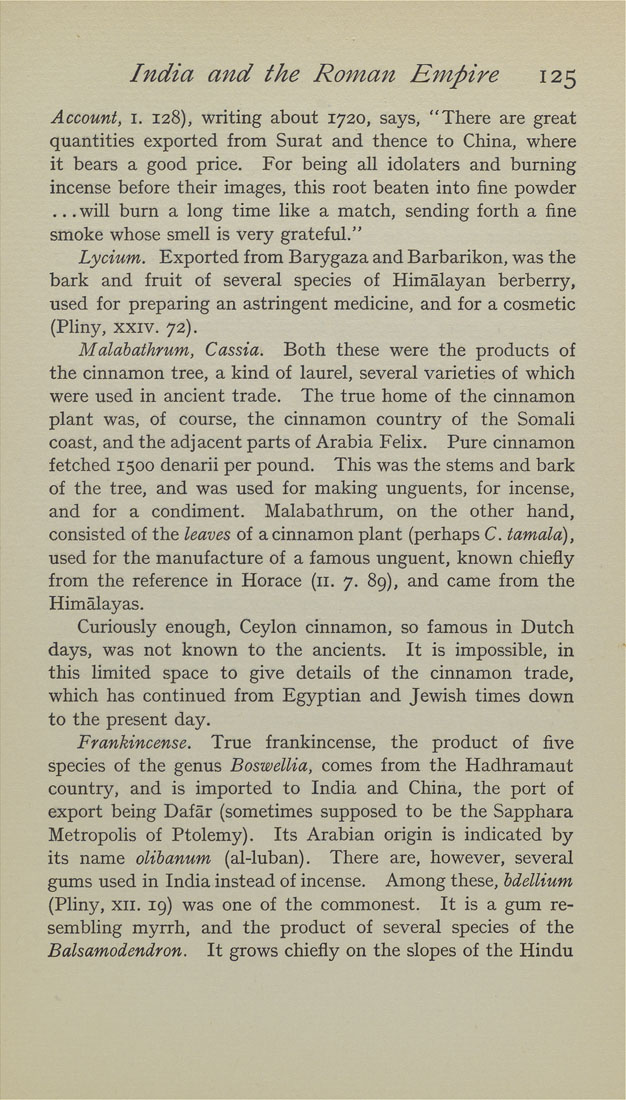India and the Roman Empire 125
Account, I. 128), writing about 1720, says, "There are great
quantities exported from Surat and thence to China, where
it bears a good price. For being all idolaters and burning
incense before their images, this root beaten into fine powder
... will burn a long time like a match, sending forth a fine
smoke whose smell is very grateful."
Lycium. Exported from Barygaza and Barbarikon, was the
bark and fruit of several species of Himalayan berberry,
used for preparing an astringent medicine, and for a cosmetic
(PHny, XXIV. 72).
Malobathrum, Cassia. Both these were the products of
the cinnamon tree, a kind of laurel, several varieties of which
were used in ancient trade. The true home of the cinnamon
plant was, of course, the cinnamon country of the Somali
coast, and the adjacent parts of Arabia Felix. Pure cinnamon
fetched 1500 denarii per pound. This was the stems and bark
of the tree, and was used for making unguents, for incense,
and for a condiment. Malabathrum, on the other hand,
consisted of the leaves of a cinnamon plant (perhaps C. tamala),
used for the manufacture of a famous unguent, known chiefly
from the reference in Horace (11. 7. 89), and came from the
Himalayas.
Curiously enough, Ceylon cinnamon, so famous in Dutch
days, was not known to the ancients. It is impossible, in
this limited space to give details of the cinnamon trade,
which has continued from Egyptian and Jewish times down
to the present day.
Frankincense. True frankincense, the product of five
species of the genus Boswellia, comes from the Hadhramaut
country, and is imported to India and China, the port of
export being Dafar (sometimes supposed to be the Sapphara
Metropolis of Ptolemy). Its Arabian origin is indicated by
its name olibanum (al-luban). There are, however, several
gums used in India instead of incense. Among these, bdellium
(Pliny, XII. 19) was one of the commonest. It is a gum re¬
sembling myrrh, and the product of several species of the
Balsamodendron. It grows chiefly on the slopes of the Hindu
|








